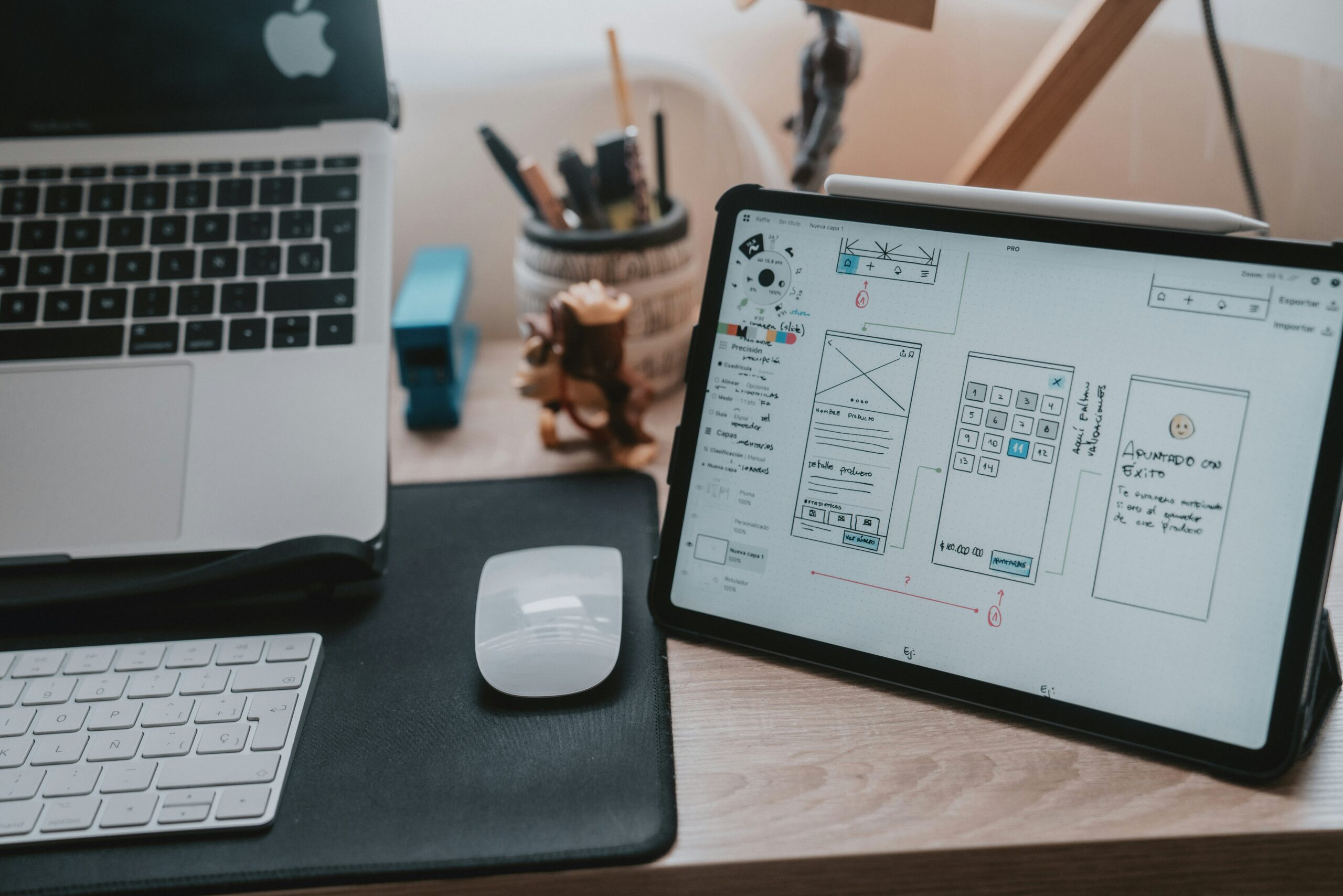UI/UX Design

About Course
UI/UX design, short for User Interface/User Experience design, is a multidisciplinary field focused on creating digital products that are intuitive, visually appealing, and user-friendly. UI design primarily deals with the look and feel of a product, while UX design focuses on enhancing the overall experience and usability.
Here’s a detailed breakdown of UI/UX design:
1. **User Interface (UI) Design**: UI design involves creating the visual elements and interactive components of a digital product, such as websites, mobile apps, and software interfaces. UI designers are responsible for crafting layouts, choosing colors, typography, icons, and other visual elements to create an aesthetically pleasing and cohesive user interface. They also design interactive elements like buttons, forms, menus, and navigation systems to ensure ease of use and intuitive interaction.
2. **User Experience (UX) Design**: UX design is concerned with the overall experience of using a digital product. It involves understanding users’ needs, behaviors, and goals to create designs that are functional, efficient, and enjoyable to use. UX designers conduct user research, create user personas, and develop user journey maps to identify pain points and opportunities for improvement in the user experience. They focus on factors such as usability, accessibility, information architecture, and interaction design to optimize the overall user experience.
3. **User Research**: User research is a crucial aspect of UX design that involves gathering insights about the target audience to inform design decisions. UX designers use various research methods such as interviews, surveys, user testing, and analytics to understand user needs, preferences, and behaviors. By empathizing with users and gaining a deep understanding of their motivations and pain points, designers can create more effective and user-centric designs.
4. **Information Architecture**: Information architecture (IA) is the organization and structure of content within a digital product. UX designers develop IA frameworks, sitemaps, and navigation systems to help users find information and complete tasks efficiently. They organize content hierarchically, categorize information logically, and design intuitive navigation paths to ensure a seamless user experience.
5. **Wireframing and Prototyping**: Wireframing and prototyping are essential techniques used in UX design to visualize and test design concepts before implementation. UX designers create wireframes, which are low-fidelity sketches or mockups that outline the layout and functionality of a digital product. Prototyping involves creating interactive prototypes that simulate the user experience and allow for user testing and feedback. By iterating on wireframes and prototypes, designers can refine the design and identify usability issues early in the process.
6. **Visual Design**: Visual design plays a significant role in both UI and UX design by creating a visually appealing and cohesive aesthetic for the digital product. Visual designers focus on aspects such as typography, color theory, imagery, and branding to create a consistent and engaging visual identity. They collaborate closely with UI designers to ensure that the visual design enhances the overall user experience and reinforces the brand’s message and identity.
7. **Usability Testing**: Usability testing is a critical phase in the UX design process that involves evaluating the usability and effectiveness of a digital product through real user feedback. UX designers conduct usability tests with target users to identify usability issues, gather feedback, and validate design decisions. By observing how users interact with the product and listening to their feedback, designers can make informed adjustments to improve the user experience.
Overall, UI/UX design is a dynamic and collaborative process that combines creativity, empathy, and problem-solving skills to create digital products that meet user needs and deliver a seamless and satisfying user experience. By integrating user-centered design principles and methodologies into the design process, UI/UX designers can create products that are not only visually appealing but also functional, intuitive, and enjoyable to use.
